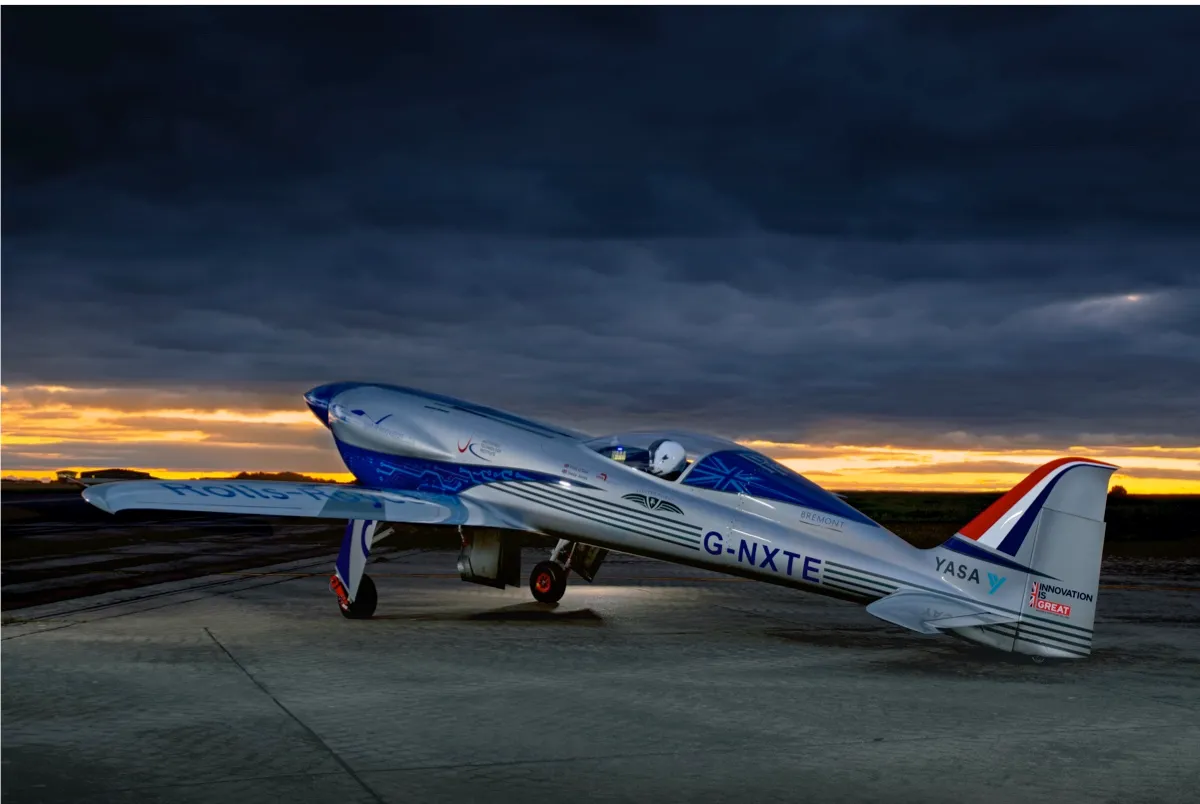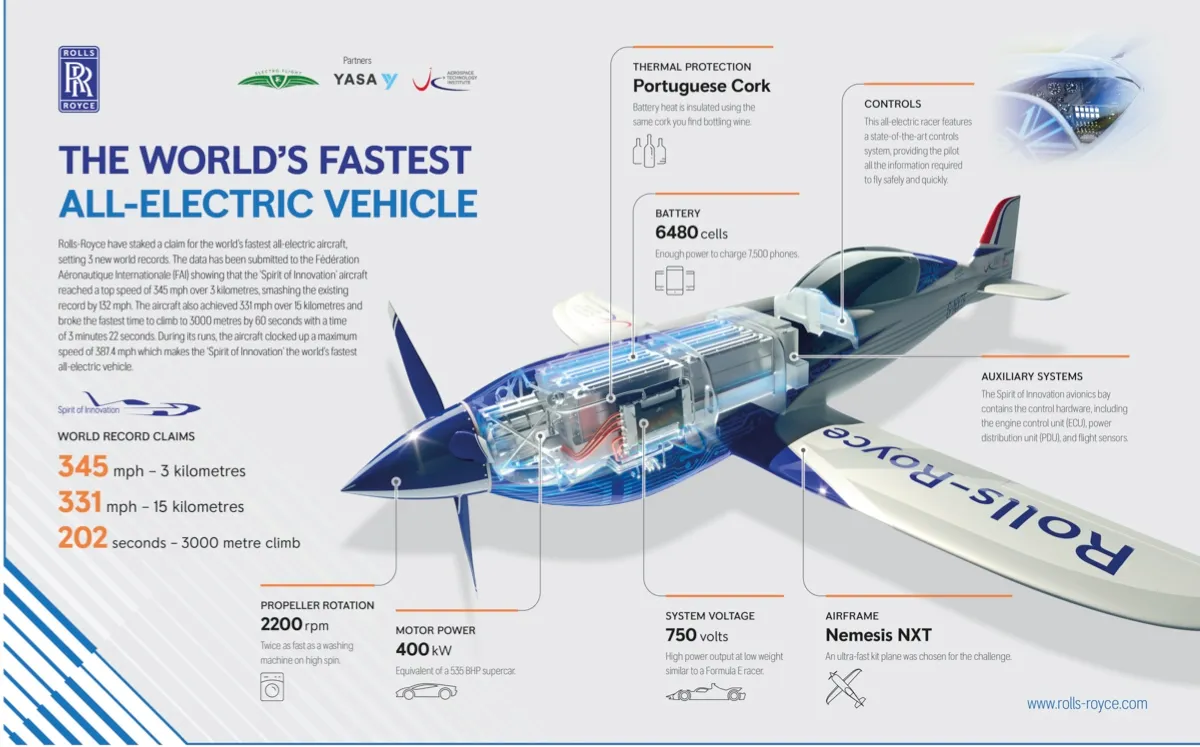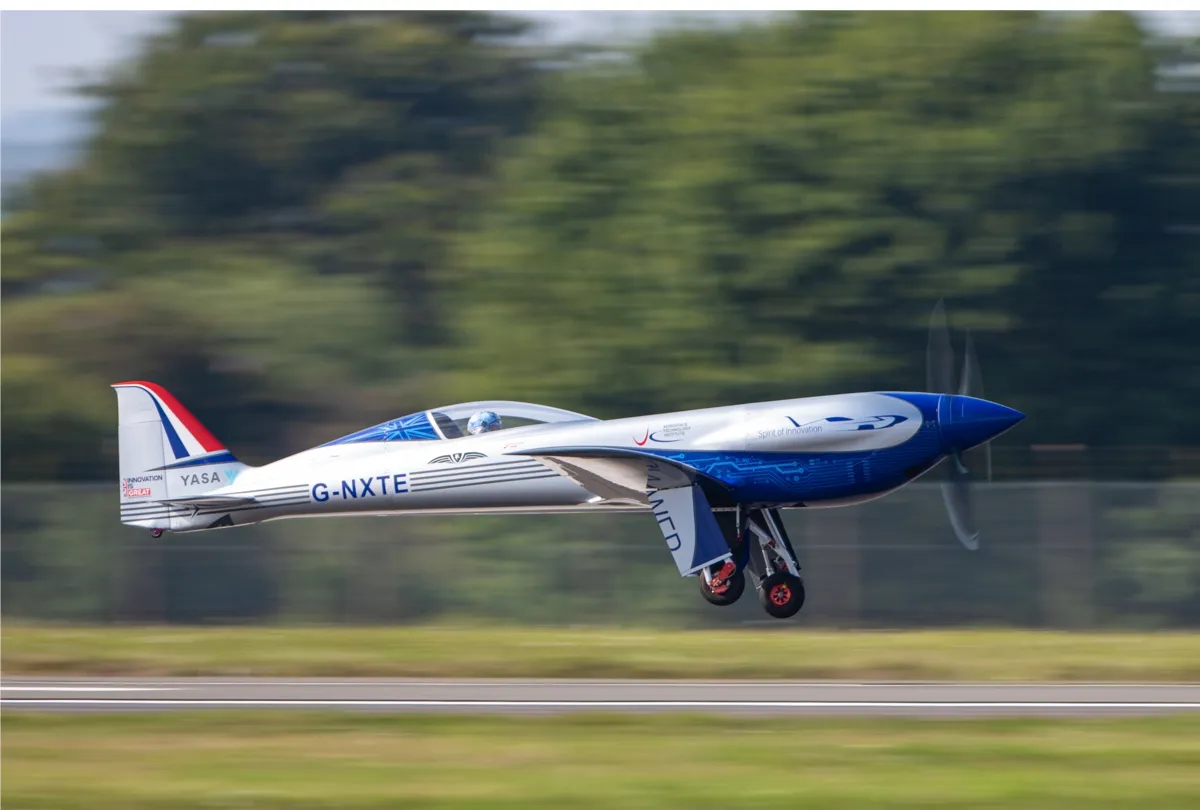Two months after its very first flight, Rolls-Royce’s Spirit Of Innovation all-electric plane has hit a record-breaking top speed of 623km/h (387.4mph).
As if that wasn't enough, Spirit Of Innovation, which is part of the Accelerating the Electrification of Flight (ACCEL) project, additionally achieved 555.9km/h (345.4mph) over a three-kilometre course, smashing the previously held record for an electric plane by 213.04km/h (132mph).
In further runs at the Boscombe Down test site, the craft broke even more records by clocking a speed of 532.1km/h (330mph) over 15 kilometres and climbing to an altitude of 3,000 metres in 202 seconds.

Rolls-Royce has submitted the data to the Fédération Aéronautique Internationale (FAI) – the World Air Sports Federation that controls and certifies world aeronautical and astronautical records– to confirm that it has broken world records.
“The advanced battery and propulsion technology developed for this programme has exciting applications for the advanced air mobility market,” said Rolls-Royce CEO Warren East.
“Following the world’s focus on the need for action at COP26, this is another milestone that will help make ‘jet zero’ a reality and supports our ambitions to deliver the technology breakthroughs society needs to decarbonise transport across air, land and sea.”
Spirit Of Innovation achieved these feats thanks to a 400kW electric powertrain and a 6,480-cell 750V battery. To put that into perspective, that battery has enough energy to juice up 7,500 smartphones. These drive a propeller that completes 2,200 revolutions per minute.
"Spirit Of Innovation is a bit different from other existing electric-powered aircraft in that it has been optimised for speed, which means that the batteries are used up very quickly – the aircraft can only fly for around seven to eight minutes with enough power remaining to land with reserves," explained Bill Read, deputy editor of Aerospace, the magazine of The Royal Aeronautical Society.
"Future designs for electric commercial aircraft will be concentrating more on endurance to keep the batteries running for as long as possible to increase range."
The aim of ACCEL is to research battery technology for future electric aeroplanes, including commercial craft. Some of the main challenges have been finding ways to reduce the weight of the batteries. To overcome this, Rolls-Royce designed the battery containment system to act as a structural part of the plane.
Read more about air travel
- X-59 QueSST: the quiet supersonic aeroplane that could revolutionise air travel
- The new age of the airship: could blimps be the future of air travel?
"According to Rolls-Royce, while electric cars typically have an equal weight proportion of cells and packaging, the battery box in the aircraft weighs 450kg, of which the cells account for 300kg," said Read.
"Rolls-Royce says that the resulting system is very energy efficient with 90 per cent of the battery power being used to power the aircraft with only 10 per cent being lost through heat and sound."
The batteries getting hot is another problem in electric planes. Spirit Of Innovation's battery cells are in fire-proof containers lined with Portuguese cork (yes, the same stuff that's in the top of your wine bottle) to provide a thermal barrier.
A bunch of sensors on the plane can monitor 20,000 points of data per second, and measure the charge, temperature and voltage of the battery cells. This is relayed back to the pilot during the flight to provide information and warnings about the state of the batteries.

With rising concerns about the effect of aviation emissions on the environment, there has been an increasing focus on the development of electric planes.
While scientists have been experimenting with electric flight since the end of the 19th Century, when French aviator Gaston Tissandier flew an electric airship, electric flight is currently impractical for your annual holiday to the Med as any plane with sufficient battery power for long flights would be too heavy to take to the skies.
Instead, many manufacturers are working on planes that could be used for short-haul flights or as air taxis. For example, easyJet is developing a fully electric 186-seater plane that could fly for about an hour, which would be sufficient to take you from London to Amsterdam. Meanwhile, Urban Air Port plans to build a skyport in Coventry, which will be the world's first operational hub for air taxis and cargo drones.

Indeed, according to Read, Rolls-Royce plans to use the experience gained from the ACCEL project in the development of a complete electric propulsion system for electric vertical take-off and landing (eVTOL) air taxis and larger electric-powered commuter aircraft.
One problem with batteries is that the cells will degrade with use. According to a member of the ACCEL team, batteries can only be recharged from 500 to 1,500 cycles before they degrade too much to be of use to power aircraft. This could be a problem for eVTOL operators which will need to use full power for take-offs and landings, and will require frequent recharges which could wear out their batteries quite quickly
